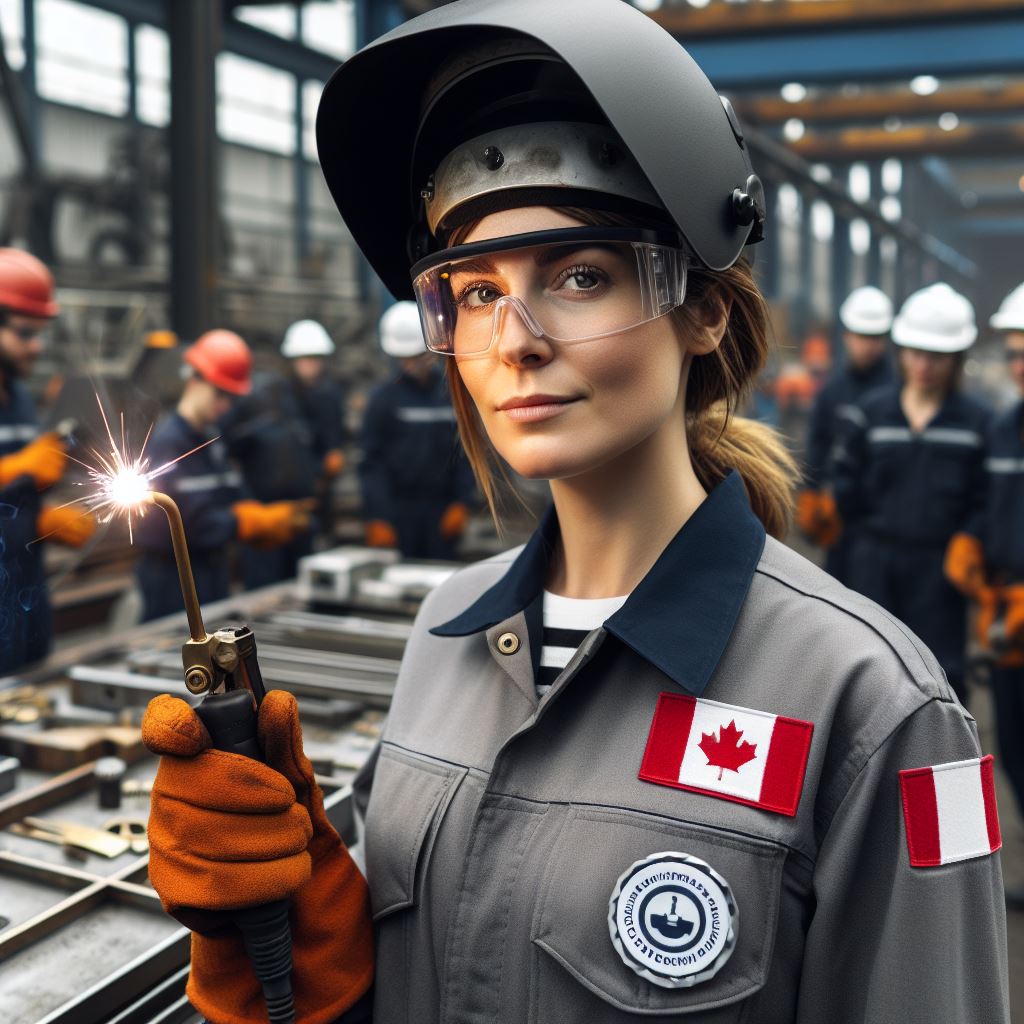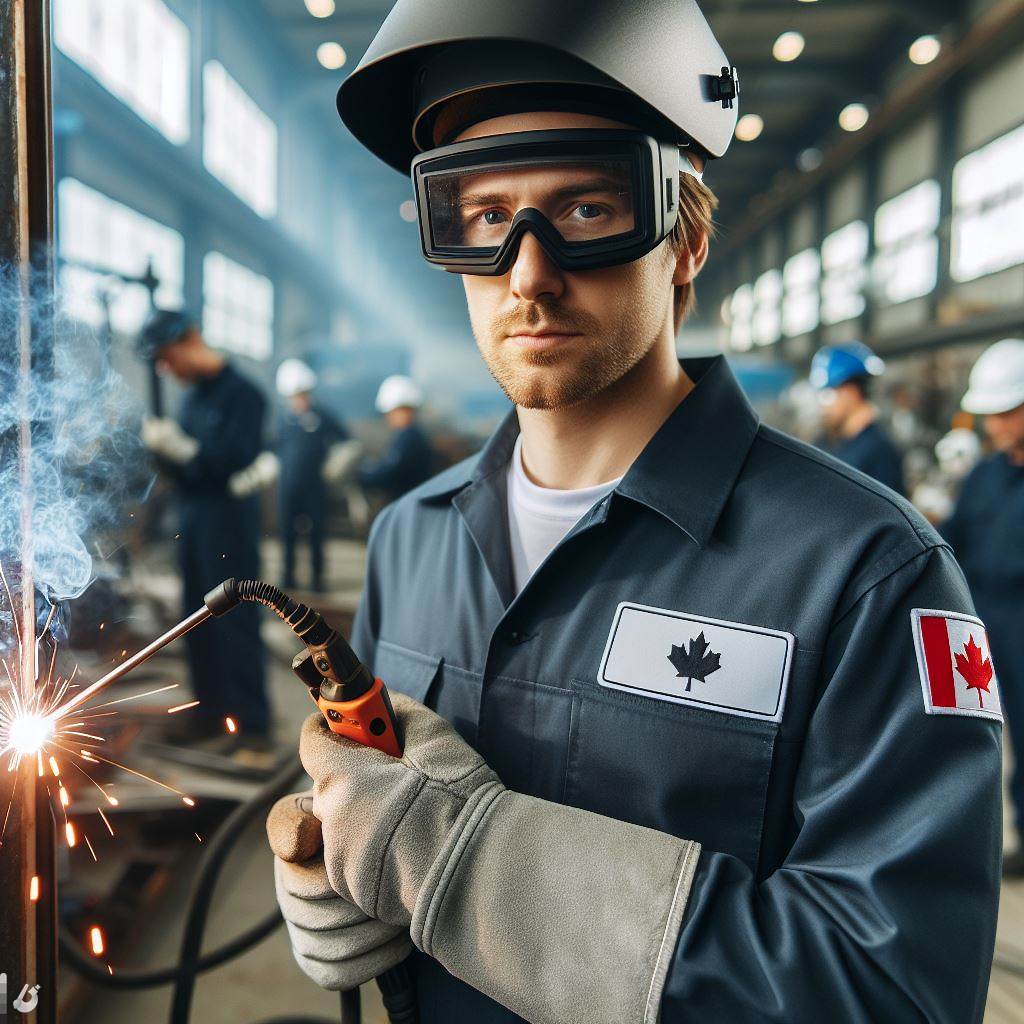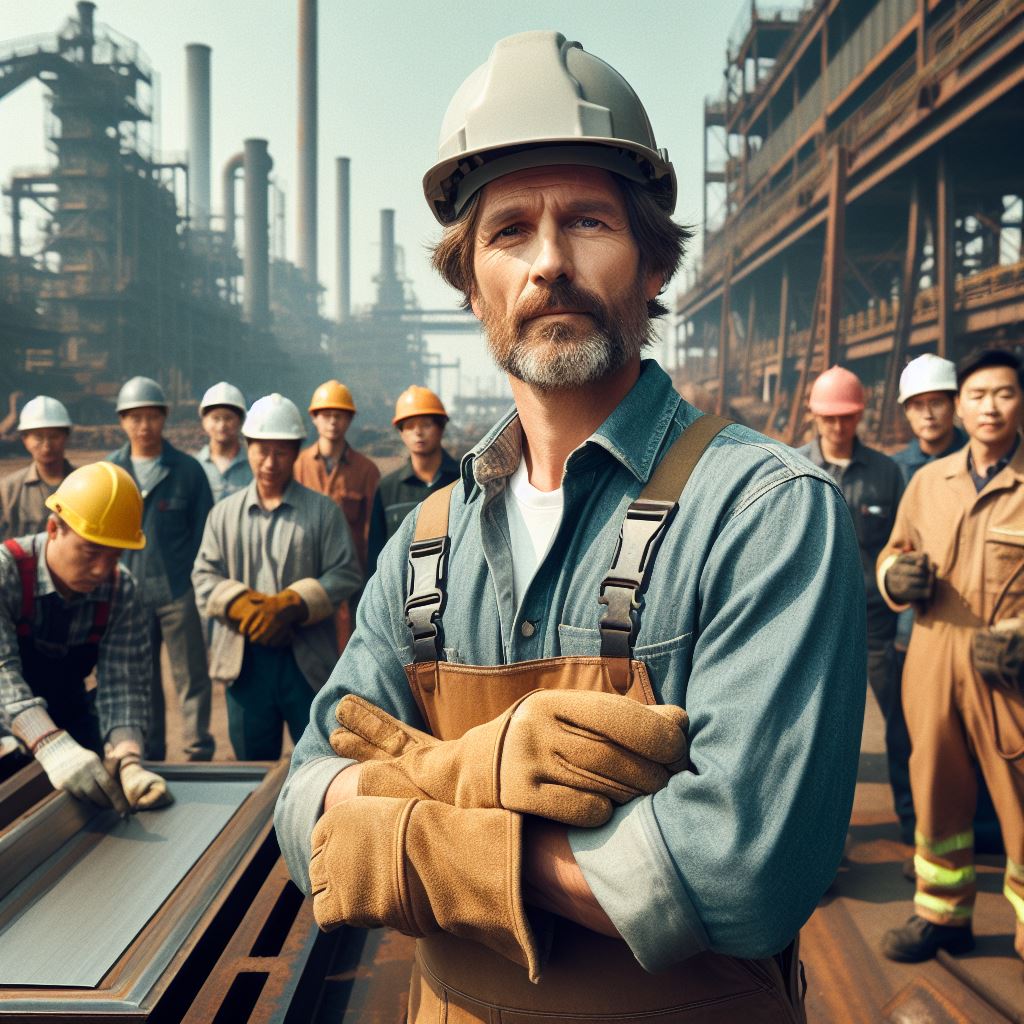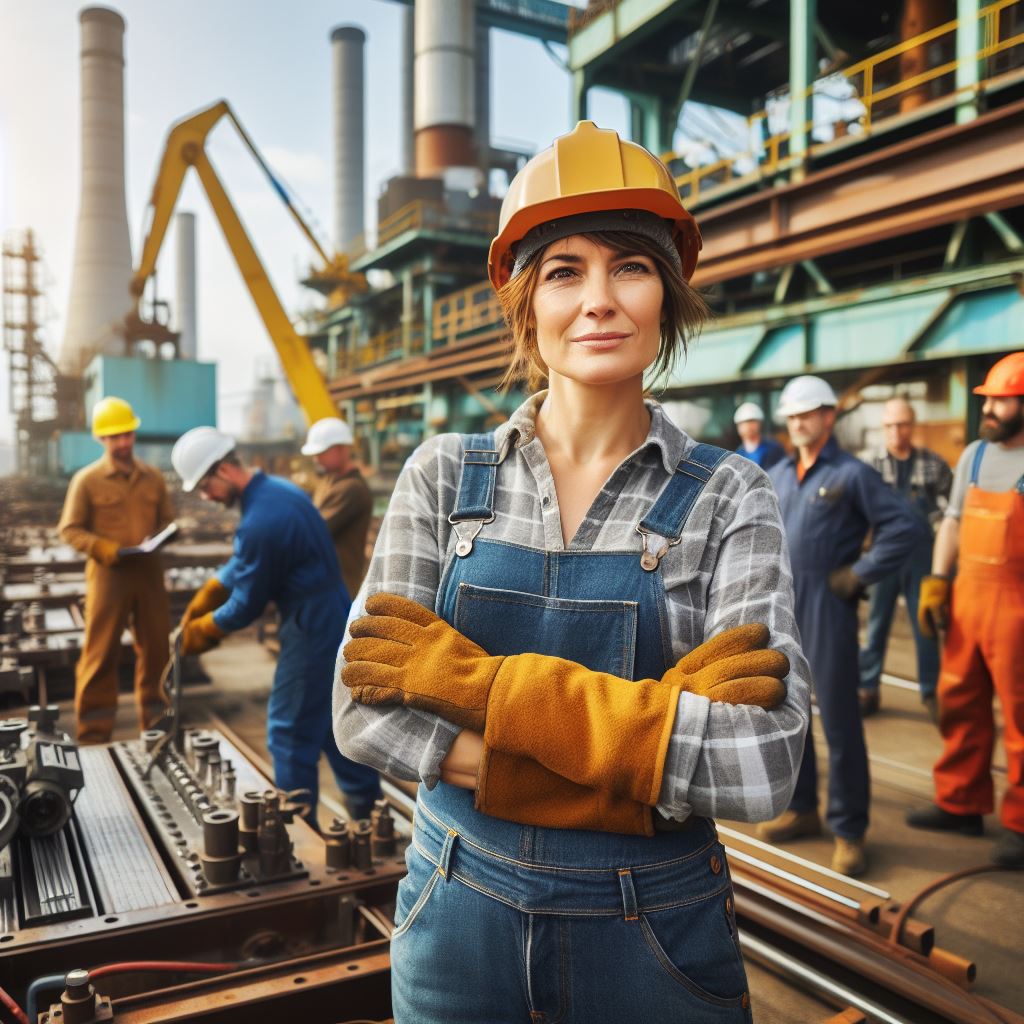Introduction
Sculptural welding is the art of joining metal pieces to create three-dimensional sculptures.
Its history dates back to the 20th century when it emerged as a popular form of artistic expression.
Sculptural welding involves the use of a welding machine to fuse various metal components together.
This technique allows artists to shape and manipulate metal into intricate and awe-inspiring sculptures.
The origins of sculptural welding can be traced back to the Industrial Revolution when metalworking techniques advanced rapidly.
This period marked a shift in the art world, with artists starting to explore new materials and techniques.
One of the pioneers of sculptural welding was Julio González, a Spanish artist who experimented with this medium in the early 20th century.
His innovative use of welding transformed traditional metalworking into a creative form of artistic expression.
In the mid-20th century, artists like David Smith and Alexander Calder further popularized sculptural welding.
They explored new ways to manipulate metal and create visually striking sculptures that challenged traditional notions of art.
Sculptural welding continues to evolve today, with contemporary artists pushing the boundaries of the medium.
They explore diverse themes and experiment with various welding techniques to create unique and thought-provoking artworks.
The art of sculptural welding offers a wide range of possibilities for artists to express their creativity.
It allows them to transform raw metal into intricate sculptures that convey emotions, ideas, and stories.
In this blog section, we will delve deeper into the world of sculptural welding, exploring its techniques, prominent artists, and the impact it has on the art world.
Join us on this journey to uncover the beauty and allure of this fascinating art form.
Benefits of Sculptural Welding
When it comes to the art of sculptural welding, there are numerous benefits that make it a popular form of creative expression.
From the versatility of the medium to the ability to work with various materials, sculptural welding offers artists a unique and customized way to bring their visions to life.
In this blog section, we will explore some of the key benefits of sculptural welding.
Versatility of the Medium
Sculptural welding allows artists to work with an incredibly diverse range of materials, including steel, aluminum, and copper.
This versatility opens up a world of possibilities, enabling artists to create sculptures of different shapes, sizes, and textures.
Creation of Unique and Customized Artwork
One of the main advantages of sculptural welding is the opportunity to create truly unique and customized artwork.
Unlike mass-produced pieces, sculptures created through welding are one-of-a-kind, ensuring that artists can truly express their individuality and artistic vision.
Ability to Work with Various Materials
Sculptural welding allows artists to work with a wide range of materials, each with its own distinct properties and characteristics.
Whether it’s the strength and durability of steel or the malleability of aluminum, artists can choose the material that best suits their artistic goals.
Unlock Your Career Potential
Visualize a clear path to success with our tailored Career Consulting service. Personalized insights in just 1-3 days.
Get StartedExploring the Balance Between Art and Function
Another benefit of sculptural welding is the opportunity to explore the balance between art and function.
Welded sculptures can serve both as visually striking artworks and functional objects such as furniture or architectural elements.
This combination adds a whole new dimension to the art form.
Enhancing Outdoor Spaces
- Sculptural welding can be used to enhance outdoor spaces, such as gardens, parks, or public plazas.
- Outdoor sculptures created through welding can withstand various weather conditions and add a touch of artistry to any environment.
- These sculptures not only beautify outdoor spaces but also provide a point of interest and conversation for visitors.
Igniting Imagination and Creativity
- Sculptural welding challenges artists to think outside the box and unleash their imagination.
- The process of transforming raw materials into sculptural masterpieces requires creativity and problem-solving skills.
- Welding allows artists to push the boundaries of traditional art forms and create truly innovative and thought-provoking pieces.
Promoting Sustainability
- Many sculptural welding artists embrace the concept of sustainability by repurposing scrap metal and salvaged materials.
- By giving new life to discarded objects, these artists contribute to reducing waste and promoting environmental consciousness.
- Sculptural welding showcases the potential of recycling and upcycling in the world of art, inspiring others to adopt sustainable practices.
Emotional and Aesthetic Impact
- Sculptural welding has the power to evoke strong emotions and create a lasting aesthetic impact on viewers.
- Through the skillful use of form, texture, and composition, welded sculptures can convey a range of emotions and tell compelling stories.
- Whether it’s a monumental public sculpture or a smaller piece for a private collection, sculptural welding has the ability to leave a lasting impression on its audience.
In fact, sculptural welding offers a myriad of benefits for both artists and art enthusiasts.
From its versatility and ability to work with various materials to the creation of unique and customized artwork, sculptural welding adds a dynamic and captivating dimension to the world of art.
Whether it’s enhancing outdoor spaces or igniting imagination and promoting sustainability, the art of sculptural welding continues to inspire and excite artists and viewers alike.
Read: Marine Welding Opportunities in Canada
Exploring sculptural welding techniques
Overview of Different Welding Methods used in Sculpture
When it comes to sculptural welding, there are several different methods that artists can utilize. Each method has its advantages and can result in unique and stunning sculptures.
- Gas Tungsten Arc Welding (GTAW) or TIG Welding: This method uses a tungsten electrode to create the weld, and a shielding gas to protect the weld area, resulting in precise and clean welds. It is commonly used for thin and delicate metal sculptures.
- Shielded Metal Arc Welding (SMAW) or Stick Welding: This is the most basic and commonly used welding method. It involves using a flux-coated electrode, which melts as the weld is created.
It is versatile and can be used for both thick and thin metal sculptures. - Gas Metal Arc Welding (GMAW) or MIG Welding: This method uses a wire electrode that is continuously fed through a welding gun. A shielding gas is also used to protect the weld area.
It is known for its high productivity and is commonly used for larger sculptures. - Flux-Cored Arc Welding (FCAW): This method is similar to GMAW but uses a tubular flux-filled electrode instead of a solid wire. It is ideal for outdoor sculptures as it produces a slag that protects the weld from atmospheric elements.
Detailing the Process of Creating Sculptures through Welding
Creating sculptures through welding involves several steps that require precision and artistic vision. Here is a breakdown of the process:
- Design and Planning: The artist begins by conceptualizing the sculpture and creating a detailed design. Factors such as size, materials, and welding method are considered.
- Material Selection: Choosing the right metal is crucial. Factors such as durability, malleability, and artistic intent are considered. Common metals used are steel, stainless steel, and aluminum.
- Preparation: The metal pieces are cut, shaped, and cleaned to ensure proper fit and a clean welding surface. This step is vital for precise and strong welds.
- Assembly: The artist assembles the sculpture by tack welding the individual metal pieces together. Tack welds serve as temporary connections before final welding.
- Welding: Using the chosen welding method, the artist proceeds to create permanent welds, ensuring structural integrity and aesthetic appeal.
- Finishing: Once the welding is complete, the sculpture undergoes finishing touches such as grinding, sanding, and polishing to create a smooth and seamless surface.
- Surface Treatment: Depending on the desired finish, the artist may apply paint, patina, or other surface treatments to enhance the sculpture’s appearance and protect it from corrosion.
Importance of Understanding Metal Properties and Behavior during Welding
To achieve successful sculptural welding, artists must have a thorough understanding of metals and their behavior during the welding process.
Here’s why it’s crucial:
- Material Choice: Different metals have varying properties, including melting points, expansion rates, and conductivities. Understanding these properties allows artists to select the most suitable metal for their sculpture.
- Heat Control: Metals have different heat conductivity, and excessive heat can distort or damage the sculpture. Artists must know how to control heat input during welding to maintain the desired shape and appearance.
- Strength and Stability: Welding involves the fusion of metals, creating a strong bond. However, improper welding techniques can result in weak or unstable joints. Understanding metal behavior ensures durable and secure sculptures.
- Corrosion Resistance: Some metals are more prone to corrosion than others. Knowledge of metal properties helps artists choose corrosion-resistant materials or apply protective coatings.
In short, sculptural welding is a fascinating art form that requires knowledge, skill, and a creative eye.
By familiarizing themselves with different welding methods, understanding the process, and grasping metal properties, artists can create awe-inspiring sculptures that stand the test of time.
Read: Robotic Welding: Canada’s Industrial Future
Famous sculptural welders
Famous sculptural welders have made significant contributions to the field with their notable works.
These artists have pushed the boundaries of traditional welding techniques and created stunning sculptures that captivate viewers.
Profile of prominent artists known for sculptural welding
David Smith
One prominent sculptural welder is David Smith, an American artist known for his abstract metal sculptures.
Smith’s works often consisted of welded steel, and he explored the interaction of space and form.
His notable works include “Cubi” series, which featured geometric shapes and balanced compositions.
Albert Paley
Another well-known sculptural welder is Albert Paley, an American artist recognized for his large-scale metal sculptures.
Paley’s works can be found in various public spaces, and he has been commissioned for numerous architectural projects.
His sculptures often incorporate intricate details and organic forms.
Richard Serra
Richard Serra is another influential sculptural welder known for his minimalist approach.
His massive steel sculptures challenge viewers’ perception of space and time.
Serra’s notable works include “Tilted Arc” and “The Matter of Time,” which have become iconic landmarks.
Louise Nevelson
Louise Nevelson, an American artist, is renowned for her abstract assemblage sculptures.
Nevelson often used found objects and welded them together to create intricate and visually striking compositions.
Her notable works include “Sky Cathedral” and “Dawn’s Wedding Chapel.”
Mark di Suvero
Mark di Suvero, an American sculptural welder, is recognized for his large-scale works that often incorporate salvaged materials.
Di Suvero’s sculptures are known for their dynamic forms and bold colors. His notable works include “Joie de Vivre” and “Declaration.”
Each of these sculptural welders has left an indelible mark on the field through their unique styles and contributions.
They have showcased the incredible potential of welding as an art form. Their works have inspired countless artists and continue to shape the world of sculptural welding.
In essence, the world of sculptural welding is enriched by the talents of prominent artists like David Smith, Albert Paley, Richard Serra, Louise Nevelson, and Mark di Suvero.
Their notable works and contributions have expanded the possibilities of welding as a medium.
These artists have showcased the power of sculptural welding to create captivating and thought-provoking sculptures.
As their legacies continue to inspire future generations, the art of sculptural welding will undoubtedly thrive and evolve.
Read: Welding in the Canadian Oil and Gas Sector

Tips for Aspiring Sculptural Welders
Recommended tools and equipment for sculptural welding
Are you interested in sculptural welding?
Here are some tips to help you get started:
- Familiarize yourself with the recommended tools and equipment for sculptural welding.
- Invest in a sturdy welding machine, protective gear, welding clamps, and a variety of welding electrodes.
- Get a good set of angle grinders, wire brushes, and files to help with the finishing touches on your sculptures.
- Always prioritize safety when sculptural welding. Wear a welding helmet, gloves, and a fire-resistant jacket.
- Make sure your workspace is well-ventilated. Welding fumes can be harmful, so use a fan or an exhaust system.
- Before starting any project, thoroughly clean and prepare the metal surfaces you will be welding.
- Practice proper welding techniques such as maintaining a steady hand, controlling the heat, and creating secure welds.
- Experiment with different types of welding, such as MIG, TIG, and stick welding, to broaden your skill set.
- Take advantage of online tutorials, workshops, or classes to learn more about sculptural welding techniques.
- Join welding communities or forums to connect with experienced welders and gain valuable insights and tips.
- Attend welding conferences or trade shows to discover new tools, techniques, and inspiration for your work.
- Visit local art galleries, museums, or public sculptures to study and appreciate the work of other sculptural welders.
- Network with artists and explore collaborative projects that can help you develop your skills and expand your portfolio.
Safety Precautions and Best Practices
When working with hot metal and electricity, it’s crucial to prioritize safety. Here are some precautions to follow:
- Always wear appropriate protective gear, including a welding helmet, gloves, safety glasses, and steel-toed boots.
- Ensure that your workspace is free of flammable materials and that fire extinguishers are readily available.
- Inspect your equipment regularly for any signs of damage or wear and replace or repair as necessary.
- Securely clamp your workpiece to prevent it from moving or slipping during the welding process.
- Avoid wearing loose-fitting clothing or jewelry that could get caught in the welding equipment.
- Always use proper ventilation or respiratory protection to avoid breathing in harmful fumes or gases.
- Keep a well-maintained first aid kit nearby and educate yourself on basic first aid procedures.
- Be aware of your surroundings and ensure that others nearby are also wearing appropriate safety gear.
- If you’re new to welding, consider working under the guidance of an experienced welder or taking a safety course.
Opportunities for Learning and Improving Skills
To hone your sculptural welding skills, consider the following opportunities for learning and improvement:
- Enroll in a welding program at a vocational school or community college to gain a comprehensive understanding.
- Participate in workshops or apprenticeships offered by experienced sculptural welders in your area.
- Take advantage of online resources, such as instructional videos, forums, and virtual welding simulations.
- Attend welding conferences or seminars where you can learn from industry experts and observe live demonstrations.
- Explore books, magazines, and online publications dedicated to sculptural welding for inspiration and educational content.
- Experiment with different materials, techniques, and designs to push the boundaries of your creativity and skillset.
- Enter sculptural welding competitions or submit your work for exhibitions to receive constructive feedback.
- Seek mentorship from established sculptural welders who can provide guidance and share their expertise.
- Practice regularly and document your progress to track your development as a sculptural welder.
Remember, sculptural welding is an art form that requires patience, dedication, and continuous learning. Embrace the challenges and enjoy the journey!
Read: The Environmental Impact of Welding in Canada
Conclusion
Sculptural welding is a captivating art form that combines creativity and technical skills.
Throughout this blog section, we have delved into the artistry and versatility of sculptural welding.
We have witnessed how artists transform raw materials into stunning three-dimensional sculptures using welding techniques.
The process behind sculptural welding involves intricate planning, precise measurements, and expert craftsmanship.
The beauty of sculptural welding lies in its ability to bring life and motion to a static metal structure.
Artists can create anything from delicate abstract forms to bold and imposing figures. The possibilities are truly endless.
For those who have an interest in art and love working with their hands, sculptural welding offers a unique outlet for self-expression.
It allows artists to push the boundaries of traditional sculpture and experiment with unconventional materials.
Sculptural welding has made a significant impact on the art world, challenging traditional notions of what art can be.
It has given artists a new medium to explore and has opened up endless possibilities for creative expression.
We encourage readers to explore the world of sculptural welding. Whether you choose to take it up as a hobby or pursue it professionally, the journey will be rewarding.
Discover your own artistic style and push the boundaries of what is possible with metal and fire.
Sculptural welding holds a special place in the art world, and its impact will continue to be felt for generations to come.
Embrace this unique art form and let your imagination run wild.




